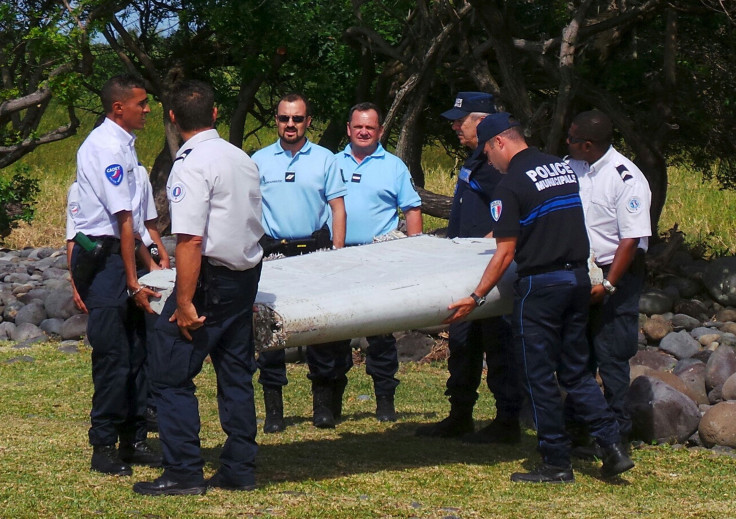Flight MH370 Update: Is Flaperon Debris From Missing Air Malaysia Airliner? Experts Still Unable To '100%' Confirm

There is no guarantee that the piece of debris found on Réunion Island actually originated from the missing Malaysia Airlines MH370 aircraft, French experts said, according to a report published earlier this week in the French newspaper la Dépêche du Midi. Investigators have been studying the debris, which comprises a piece of plane wing known as a flaperon; it was the first supposed trace of the plane since it mysteriously disappeared on March 8, 2014.
The flaperon was sent to France for examination, since Réunion Island falls under French jurisdiction. But after nearly a month of tests, experts there have been unable to definitively link the barnacle-covered flaperon to the Malaysia airliner. They have not, however, ruled out the possibility that it may, in fact, have originated from the plane.
“The Toulouse experts of the Directorate General of Armaments have finished the survey of the flaperon found on Réunion,” la Dépêche reported, according to the Inquisitr. “Nothing permits it to be 100 percent certified as belonging to MH370!”
Here's an English translation of that French report about the MH370 flaperon. My thx to readers AM2 and Jay. http://t.co/dilzoffjoJ
— Jeff Wise (@ManvBrain) August 21, 2015Experts said the wing was consistent with that of a Boeing 777, but that the investigation cannot yet be concluded.
Malaysian Prime Minister Najib Razak declared earlier this month that analysts had determined the plane debris was from MH370, though a French prosecutor urged caution.
If it is determined the flaperon did not originate from the missing airliner, it would be a major upset in an investigation that has so far turned up little evidence. Despite a multinational search for the whereabouts of the plane, no traces turned up until late last month. The finding on Réunion Island has reenergized and rerouted the search for the missing airliner.
If the flaperon is determined to have originated from the plane, some have speculated that it might indicate the plane is still sitting intact on the Indian Ocean floor. Zaaim Redha Abdul Rahma, who took part in the initial search for the plane, said the state of the debris indicated that the plane likely landed in the ocean and floated for some time before sinking, rather than crashing violently into the water. The flaperon's condition indicated it likely sat for some time at the bottom of the ocean with the plane before detaching and being pulled to shore by currents, he added.
© Copyright IBTimes 2025. All rights reserved.






















